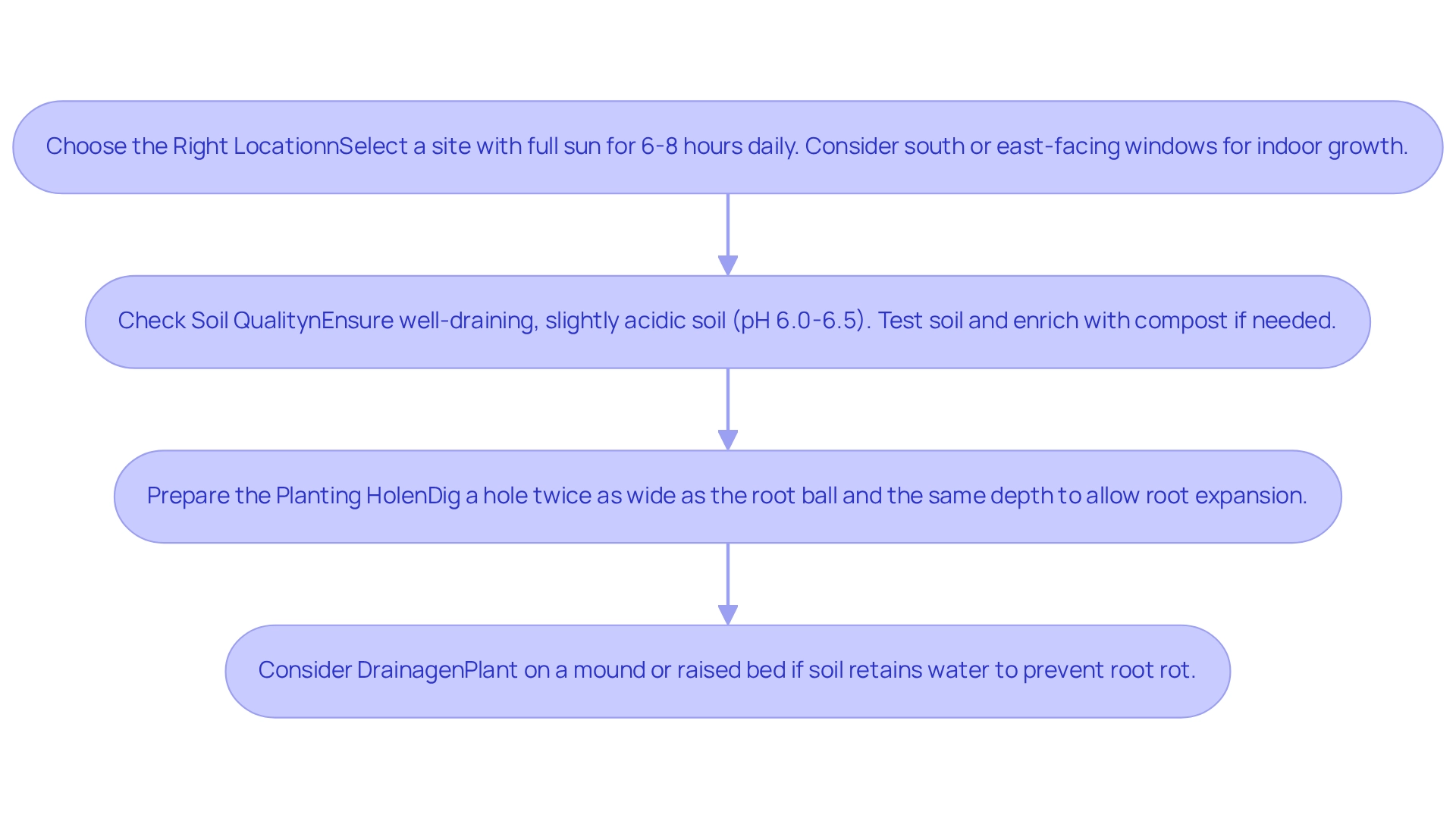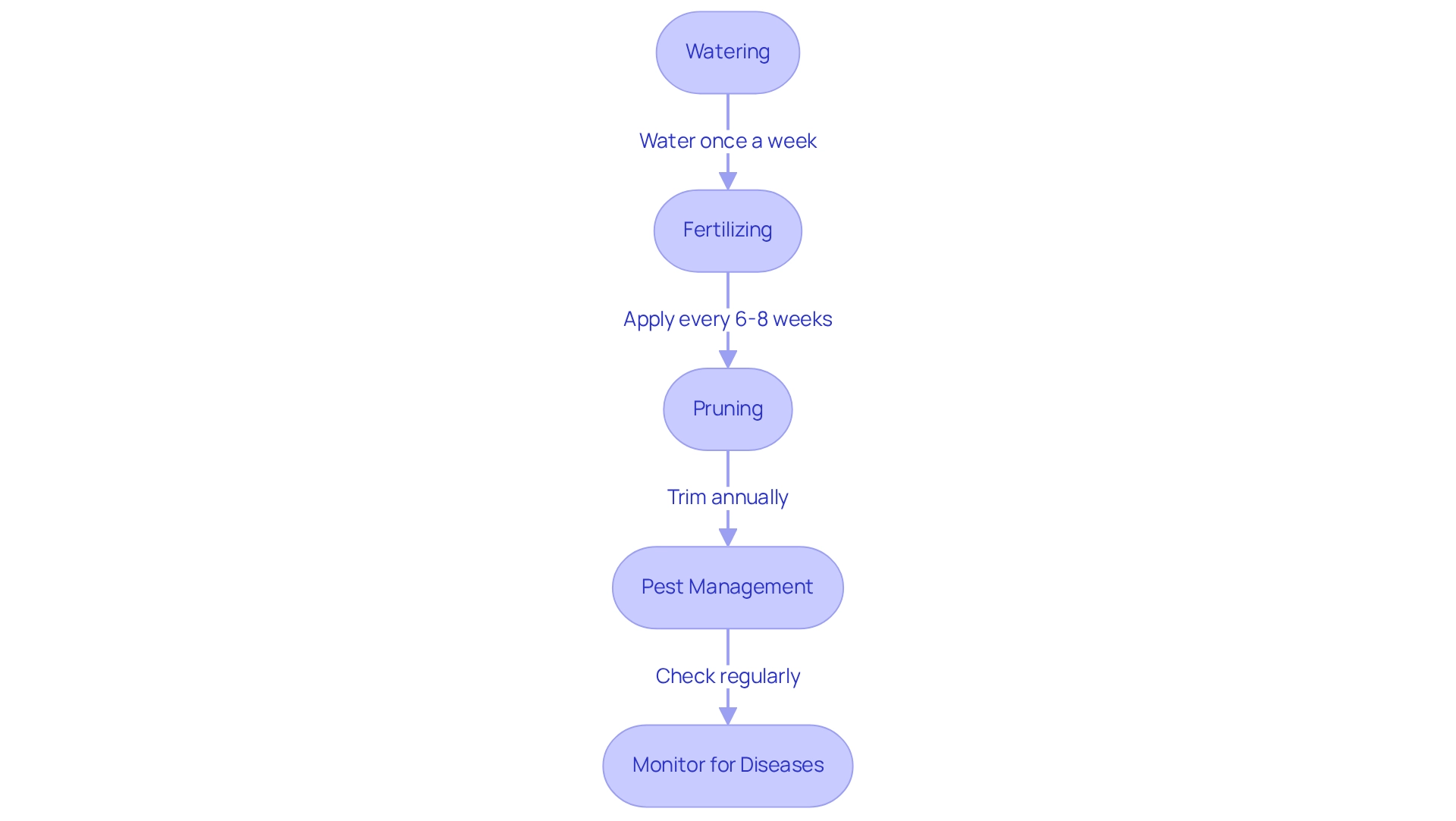🍒 Dreaming of homegrown lychees?
The Sweetheart Lychee Tree is beloved for its juicy, aromatic fruit and compact growth. Whether you’re a new gardener or a seasoned grower, this guide will walk you through how to plant, care for, and troubleshoot your Sweetheart Lychee tree.
👉 Shop the Sweetheart Lychee Fruit Tree — shipped with expert care from Everglades Farm.
Prepare Your Site for Planting
-
Choose the Right Location: It's essential to select a site that basks in full sun for at least 6-8 hours daily. We understand that regions with excessive shade or strong winds can be discouraging, as they may hinder your plant's growth. Positioning your sweetheart lychee tree near a south or east-facing window can significantly enhance its sunlight exposure, especially for indoor cultivation. To further nurture growth indoors, consider using grow lights for about 12-16 hours a day to mimic the natural light cycle.
-
Check Soil Quality: The sweetheart lychee tree flourishes in well-draining, slightly acidic soil with a pH between 6.0 and 6.5. Testing your soil is a crucial step in determining its pH and nutrient levels. If you find adjustments are necessary, enriching the soil with organic matter such as compost or well-rotted manure can greatly enhance both drainage and fertility, ensuring your plant has the best possible start.
-
Prepare the Planting Hole: Digging a hole that is twice as wide as the plant's root ball and the same depth is vital for its growth. This practice allows for the expansion of the roots. Be careful not to dig too deep, as a hole that is deeper than the root ball can lead to waterlogging, which is detrimental to your plant's health.
- Consider Drainage: If your soil retains water, planting on a mound or raised bed can significantly improve drainage. This is especially important for the sweetheart lychee tree, which is prone to root rot in overly saturated conditions. As Kiersten Rankel suggests, placing your Lychee plant near a south or east-facing window will provide it with the optimal opportunity to thrive. A case study illustrates that optimal positioning in southern or western garden regions can greatly enhance development and fruit yield, underscoring the importance of selecting the right site for your gardening journey.

Plant Your Sweetheart Lychee Tree
- Position the sweetheart lychee tree by gently placing it at the center of the prepared hole, ensuring that the top of the root ball is level with the surrounding ground surface. This careful positioning is vital for the plant's growth and stability.
- Backfill the Hole: Next, refill the hole with the excavated earth, taking care to eliminate any air pockets. Firm the ground gently around the base of the plant to provide the support it needs, which is crucial for its establishment.
- Water Thoroughly: After planting, deeply irrigate the plant to help settle the soil around the base. This initial watering is essential for supplying moisture to the newly planted sapling, encouraging healthy root growth. Consistent moisture is key to establishing a robust root system, similar to the practices recommended for soursop trees.
- Mulch: Apply a layer of organic mulch around the base of the plant, ensuring it remains a few inches away from the trunk. Mulching helps retain soil moisture, suppresses weed growth, and regulates soil temperature, creating an optimal environment for growth.
- Staking (if necessary): If the plant is tall or situated in a windy area, consider staking it for additional support. Use soft ties to secure the sweetheart lychee tree without causing damage to the trunk, ensuring it remains upright as it establishes itself.
Incorporating these best practices not only enhances the success rate of planting the sweetheart lychee tree but also contributes to the overall health and productivity of your garden. Proper planting techniques can significantly reduce the risk of yield loss due to pests like the lychee erinose mite, which can cause up to 80% yield reduction if not managed effectively. By empowering ourselves with knowledge and best practices, we can achieve fruitful outcomes in our gardening endeavors. Remember, every step you take in caring for your plants brings you closer to a thriving garden.

Care for Your Sweetheart Lychee Tree
-
Watering: It's important to keep the ground consistently damp, but not overly saturated. Aim to water deeply once a week, adjusting the frequency based on rainfall and temperature. Young Sweetheart Lychee trees may need more frequent watering, especially during their early growth stages. Be mindful, as overwatering—particularly from lawn sprinkler systems—can lead to root rot. Monitoring soil moisture levels is crucial. As Kiersten Rankel wisely advises, "Be consistent, but not overzealous; your lychee isn't trying to win a drinking contest."
-
Fertilizing: To help your plants thrive, apply a balanced fertilizer designed for fruit plants every 6-8 weeks during the growing season, which is spring and summer. Make sure to follow the manufacturer's instructions for application rates. Did you know that lychee fruit contains 0.3 mg of iron per 100 g? This makes it a nutritious addition to your garden, enhancing both your harvest and your well-being.
-
Pruning: Taking the time to trim your plant annually is essential for maintaining its shape and removing any dead or diseased branches. This practice encourages healthy growth and improves air circulation, creating a thriving environment for your sweetheart lychee tree.
- Pest Management: Regularly examine your plant for pests, such as scale insects and mealybugs. If you spot any, don't hesitate to use organic insecticidal soap or neem oil as needed to control infestations. Remember, staying proactive can make all the difference in keeping your plants healthy.
- Monitor for Diseases: Keep an eye out for signs of root rot or leaf spot diseases. Ensuring proper drainage and avoiding overwatering can help prevent these issues. Establishing a regular irrigation plan based on moisture assessments can aid in preserving the vitality of your sweetheart lychee tree, helping it flourish across the seasons. Additionally, consider the insights from the case study named "The Drought Dilemma," which emphasizes the importance of evaluating moisture levels to prevent underwatering, which can lead to crispy leaves. Together, we can nurture our gardens and watch them thrive.

Troubleshoot Common Growth Issues
Troubleshoot Common Growth Issues
- If you notice yellowing leaves on your sweetheart lychee tree, it may be signaling overwatering or a nutrient deficiency. First, check the moisture content; if the soil feels excessively saturated, it’s time to reduce watering. Conversely, if it’s dry, consider applying a balanced fertilizer to replenish those essential nutrients. Remember, maintaining a cultivation period of no more than three years is crucial for your plant's health.
- Wilting leaves can often indicate underwatering or root decay. Ensure your tree is receiving adequate water, especially during dry spells. If wilting continues, take a moment to inspect the roots for signs of rot, which can happen in poorly draining soil. As experts remind us, "Stunted growth of new branches can also be a sign that you need to water."
- Poor Fruit Set: If your plant blooms beautifully but doesn’t produce fruit, this may be due to insufficient pollination or a nutrient imbalance. It’s important to ensure your plant is healthy; consider hand-pollinating to boost fruit set. Regularly check for signs of stress that could hinder flowering.
- Pest Infestations: Pests like aphids and fruit flies can threaten the well-being of your plants. If your sweetheart lychee tree is impacted by pests like passion vine hoppers, it's crucial to promptly identify and manage these infestations. Conduct regular inspections to catch any issues early. You might want to try organic pest management techniques, such as insecticidal soap or neem oil, to minimize harm and protect your plant’s health.
- Fungal Diseases: Black spots on leaves may be a sign of a fungal infection. To combat this, enhance air circulation around your plant and apply a fungicide if necessary. Keeping appropriate spacing between plants can also help reduce the risk of fungal issues.
🍈 Compare Lychee Varieties — see how Sweetheart stacks up!

Conclusion
🍒 Ready to Plant Your Sweetheart Lychee Tree?
Get started with the Sweetheart Lychee Tree and bring tropical sweetness to your backyard.
Read: Sweetheart Lychee vs Mauritius: Flavor and Characteristics Compared
Looking for more options?






0 comments